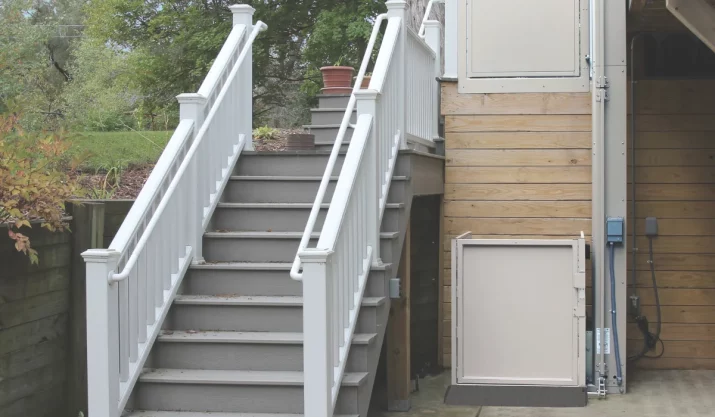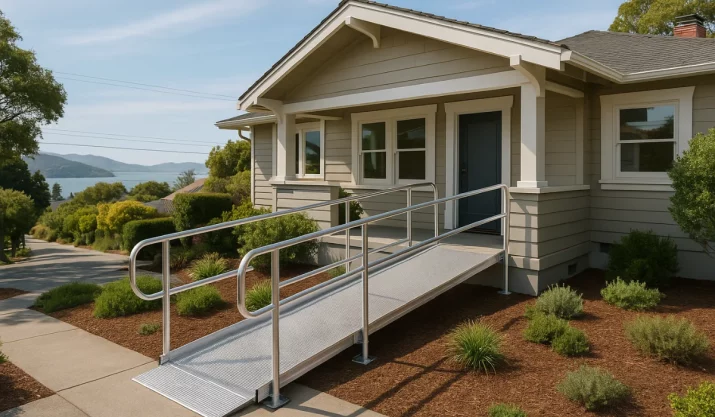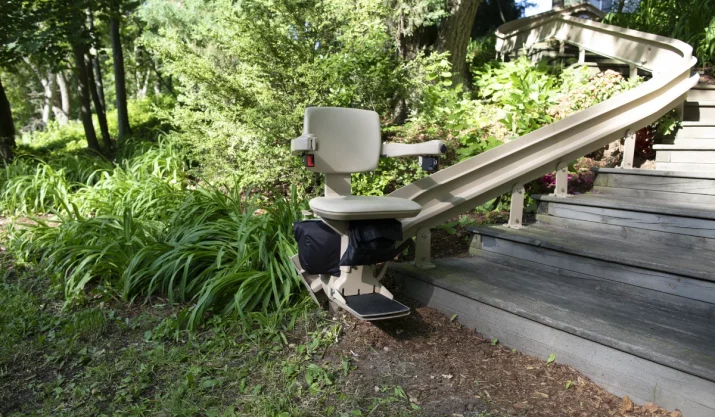Types of Wheelchair Ramps: Which One Is Right for Your Home?
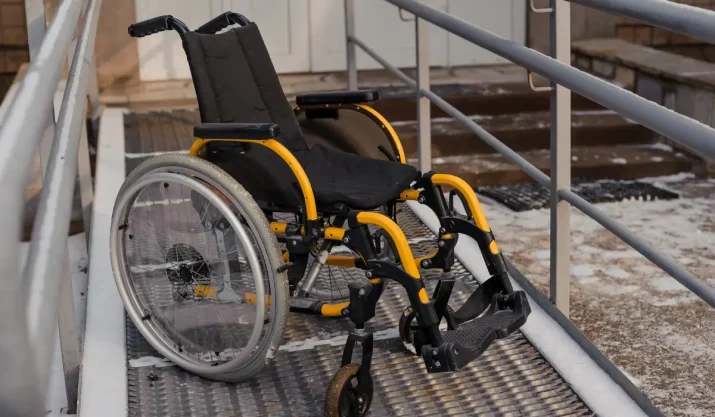
Table of Contents
If you or a loved one lives with a disability, you know how important it is to have safe and easy access in and around the home. For many wheelchair users or people using mobility devices, even a small step can be a big problem.
Whether you’re in a house, apartment, or visiting public spaces, ramps make it easier to get around. But there are many types of wheelchair ramps, and not all of them work for every home or situation.
This guide breaks down the most common ramp types and helps you choose the right wheelchair ramp for your accessibility needs.
Key Takeaways
- A wheelchair ramp helps people with disabilities and mobility needs move safely in and out of their homes.
- Some ramps, like threshold, folding, and portable ones, are easy to carry, set up, and use when traveling.
- Other ramps, like modular, wood, and aluminum, are better for long-term home access and may need permits.
- California Mobility gives free home checks and builds safe, ADA-compliant ramps that fit your space and needs.
Threshold Ramps
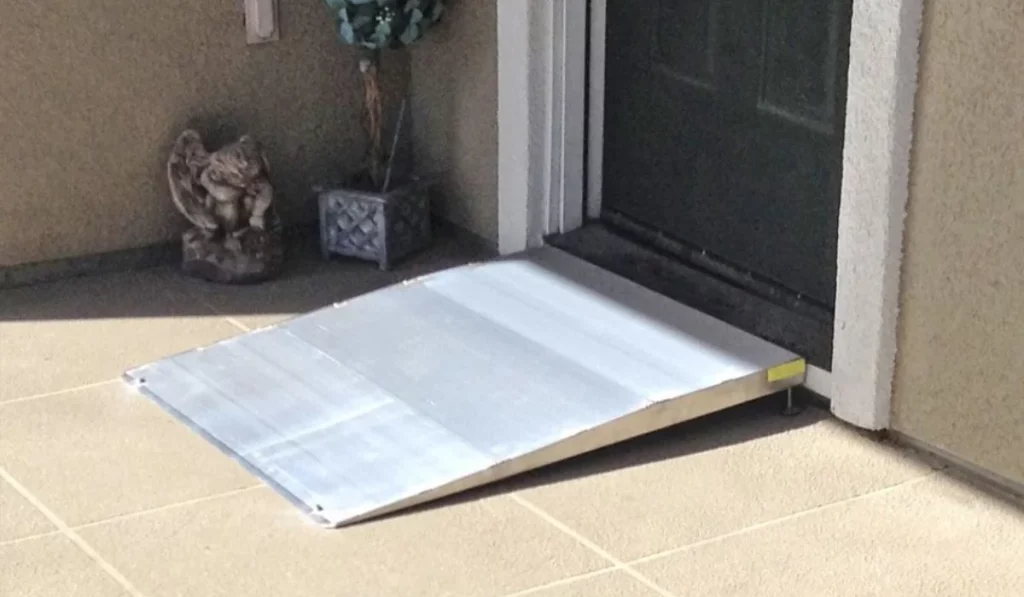
Threshold ramps are small ramps made to fix tiny height changes, usually just a few inches of rise. You’ll often find them at doorways or sliding glass doors.
In many California homes, especially older ones, the door frame sticks up and makes it harder to pass through with a wheelchair or walker. These ramps are an easy, cost-effective way to fix that. They are usually made of rubber or metal and work well for both indoor and outdoor use.
If installed right, they are ADA-compliant and safe to use.
Portable Ramps

Portable wheelchair ramps are made to move around.
If you’re going on a trip or visiting friends, you can take these ramps with you. They work well in places where you don’t have a ramp already or where you can’t build a permanent one.
These ramps come in different lengths, weight capacities, and configurations. They’re popular with caregivers who help wheelchair users or people using mobility scooters or manual wheelchairs.
And since they’re not attached to the home, you won’t need a building permit to use them.
Folding Ramps
A folding ramp is a type of portable ramp that folds up for storage. Some fold in half like a suitcase ramp, while others fold in three sections like a trifold. These are great for everyday use and are easy to carry in a car or store at home.
In busy cities like Los Angeles or San Francisco, these ramps are an effective accessibility solution to get over curbs or steps. They usually come with non-slip surfaces and side edges for better safety features.
Modular Ramps
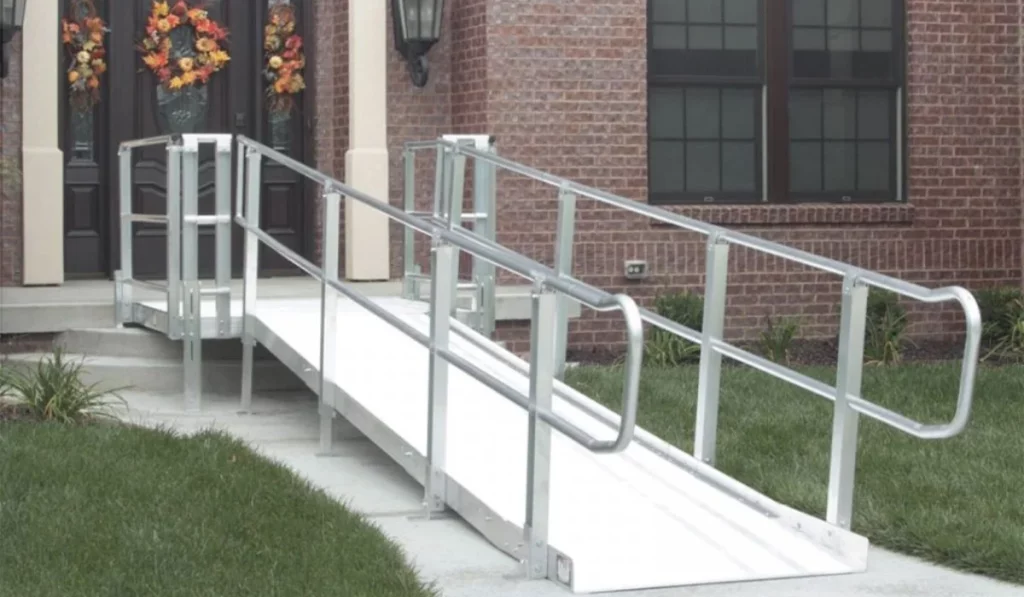
Modular wheelchair ramps are built from pieces that fit together to match your home’s layout. These ramps are strong, can be used for a long time, and are good for homes with big entryways or steep stairs.
They’re often made from metal and come with handrails, guardrails, and non-slip surfaces. They’re a great option for people who need a permanent ramp but want something that can be changed or moved later.
You’ll likely need a building permit for this type of ramp.
Telescoping Ramps
Telescoping ramps slide in and out to adjust their ramp length.
They’re made of two long tracks and are best for short stairs or getting into vehicles. These ramps are better for manual wheelchairs and may not be wide enough to lift mobility scooters.
In places like Santa Monica or Berkeley, where space is tight and curbs are common, telescoping ramps are a handy tool. With ease of use in mind, they’re light and quick to set up.
Wood Ramps
Wood ramps can be built to match the look of your house, which is nice for homes in older or historic neighborhoods. But they need more care than metal ramps. Wood can rot, crack, or become slippery if it’s not treated right, especially in coastal areas.
If you choose a wood ramp, make sure it has non-slip surfacing and is built to be ADA-compliant. It should also include handrails and follow city rules, which may require a building permit.
Aluminum Ramps
Aluminum wheelchair ramps are popular in California because they resist rust and don’t need much upkeep. They’re lightweight, strong, and safe in all types of weather. You’ll often find them used in modular ramp systems.
Many come with helpful safety features, like edge guards and textured surfaces, which help keep you safe.
They’re also an effective solution if you want a long-lasting, low-maintenance ramp that meets ADA standards.
Find the Right Ramp for Your California Home
Choosing the right ramp depends on your home, your mobility needs, and your goals. Whether you need something temporary, like a folding ramp, or a permanent ramp system with handrails and safety features, California Mobility is here to help.
We offer free home consultations across the state. Our experts will measure the foot of ramp, check your entryway, and help you meet ADA-compliant standards.
We’ll guide you through your ramp material options so you can pick what’s best for your family member, caregiver, or loved one.
Make your home more wheelchair accessible and safer today.
Get in touch with us to learn more about our products, installation services, and personalized access ramp solutions.




